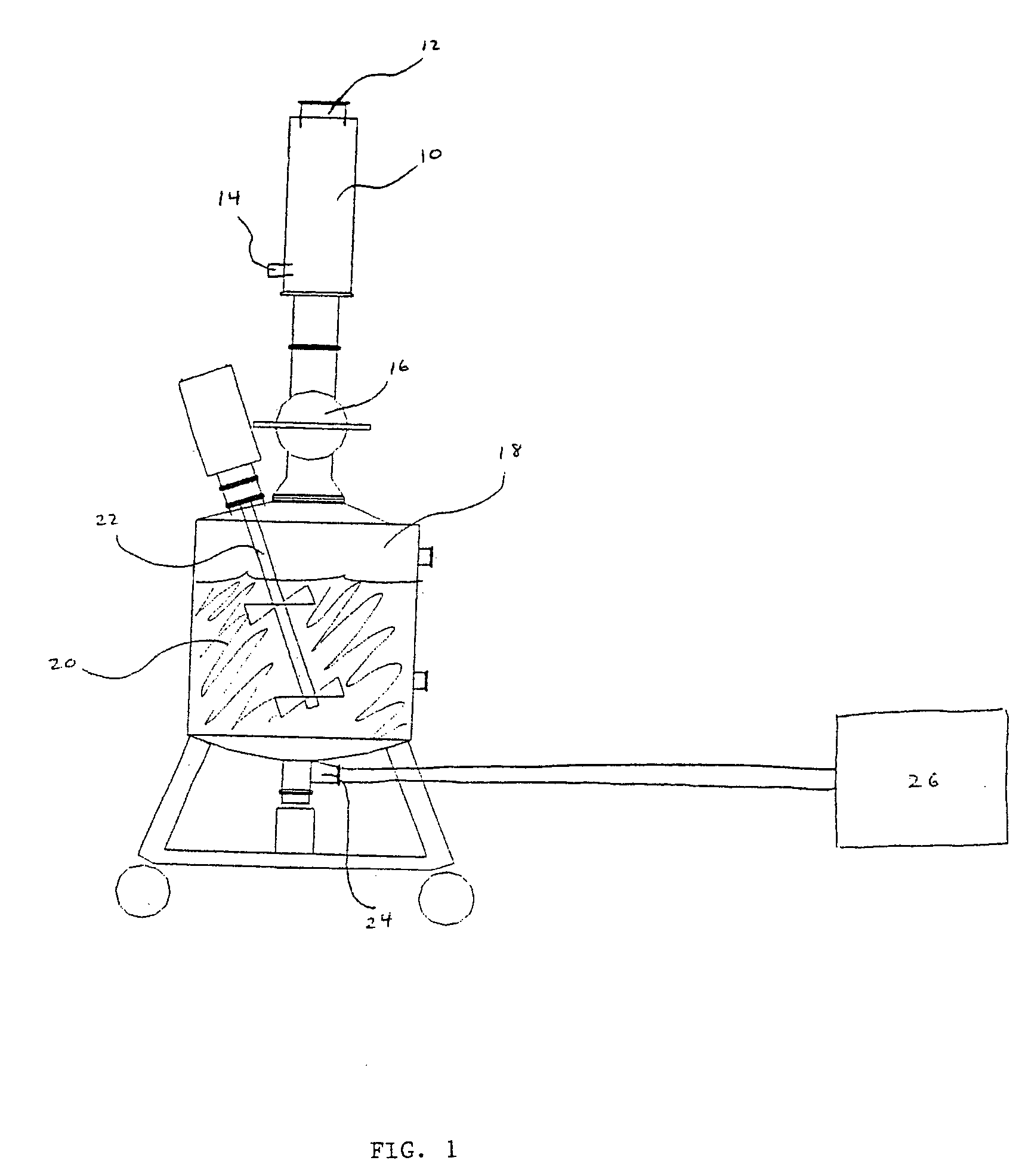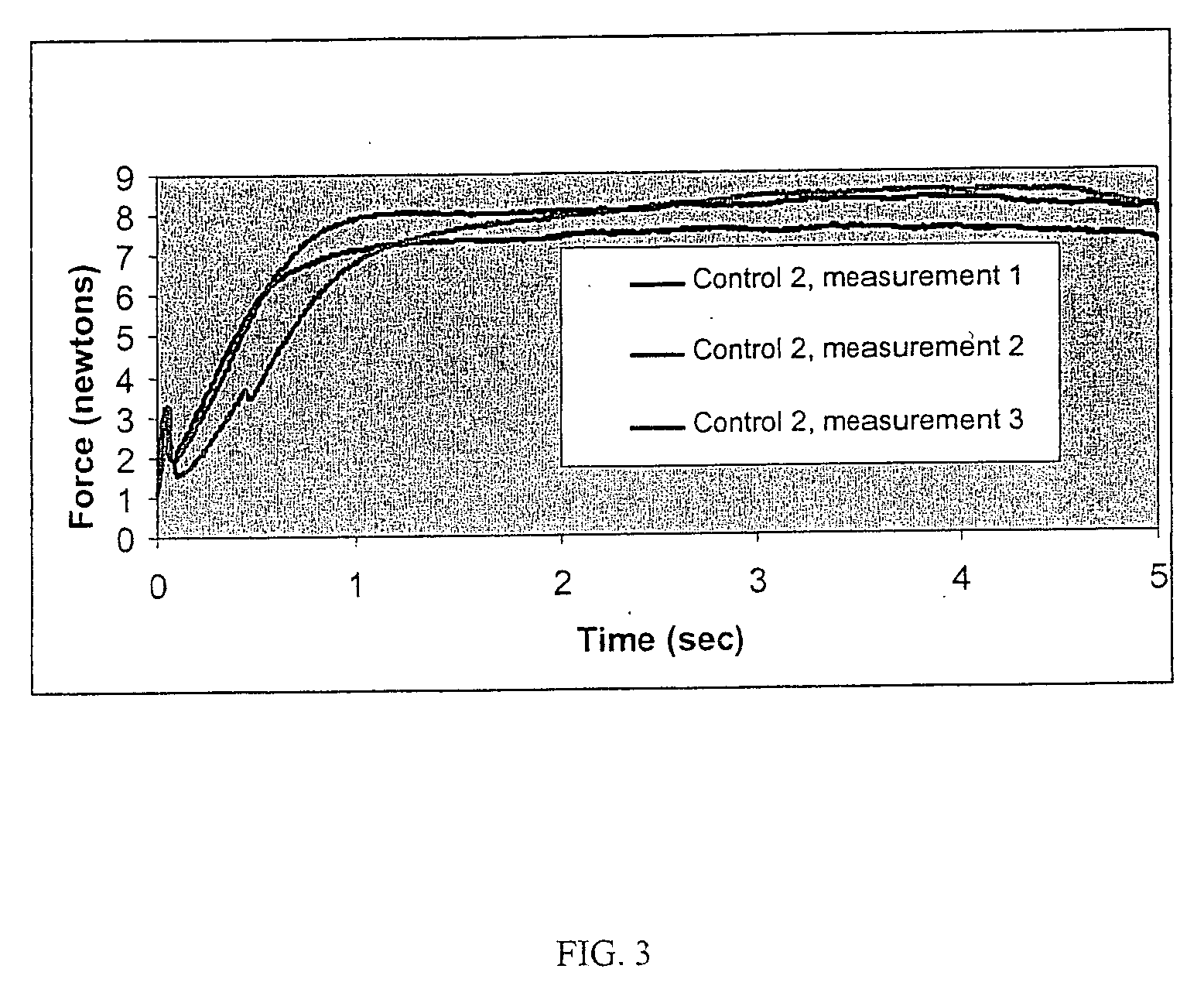Method for milling frozen microparticles
a technology of frozen microparticles and milling methods, which is applied in the directions of powder delivery, lyophilised delivery, and pharmaceutical compositions containing microparticles, can solve the problems of unsuitable injection administration of active agents, unsuitable for injection, and relatively large quantities of microparticles. achieve the effect of efficient, facile and cost-effective preparation
- Summary
- Abstract
- Description
- Claims
- Application Information
AI Technical Summary
Benefits of technology
Problems solved by technology
Method used
Image
Examples
example 1a
[0103] This example describes the production of placebo frozen, solid particles and control microparticles.
[0104] 100 grams of a poly(d,l-lactide-co-glycolide)polymer having 50 mol % d,l-lactide, 50 mol % glycolide, and an acid end group (MEDISORB® 5050 DL PLG 2A polymer; Alkermes, Inc., Cincinnati, Ohio) was dissolved using 500 milliliters (mL) of methylene chloride.
[0105] The resulting mixture was then spray frozen to produce frozen, solid particles. The mixture was atomized at about 120 mL / minute through a 2-fluid nozzle with a 35 psi nitrogen gas stream (about 160 standard liters per minute) into a liquid nitrogen stream (from 4 nozzles at 30 psi). The nozzles used were as follows: 2-fluid nozzle: fluid cap 2050, air cap 70 m (modified for microparticle production by drilling 8 holes through the air cap to provide for flow of nitrogen gas through the air cap) (Spraying Systems Co., Wheaton, Ill.); and liquid nitrogen nozzles: Model No. 110015 (Spraying Systems Co., Wheaton, Il...
example 1b
[0108] This example describes the homogenization of placebo frozen, solid particles.
[0109] About 12.5 grams of frozen, solid particles suspended in about 1 liter of liquid nitrogen, prepared as described in Example 1A, in a 1 liter beaker were homogenized using a Silverson L4R Homogenizer (Silverson Machines, Inc.; East Longmeadow, Mass.) at about 10,000 rpm for about 30 seconds. The resulting homogenized frozen, solid particles were filtered from the liquid nitrogen, placed in frozen ethanol, filtered from the ethanol, and lyophilized as described in Example 1A to produce homogenized microparticles.
[0110] The particle size distributions of the homogenized and unmilled control microparticles were then determined using a Coulter LS Particle Size Analyzer (Model 130, Beckman Coulter, Inc. Fullerton, Calif.).
[0111] Two batches each of unmilled control and homogenized microparticles were produced. The unmilled control microparticle batches had volume median particle sizes of 77.0 mic...
example 1c
[0112] The following example describes the milling of placebo frozen, solid particles.
[0113] About 250 grams of frozen, solid particles suspended in about 5 liters of liquid nitrogen, prepared as described in Example 1A, were milled using a Granumill Jr. (Fluid Air, Inc.; Aurora, Ill.) equipped with a screen (Fluid Air Part No. 110,597 d-020) having about 0.02 inch (about 500 micron) openings and a flat rotor (Fluid Air Part No. 171,144A). The Granumill Jr. was operated at about 10,000 rpm. The flow rate through the mill was not controlled, but the entire volume was poured through the mill in about 30 seconds. Thus, it is estimated that the flow rate was about 10 liters / min.
[0114] The resulting milled, frozen solid particles contained in the liquid nitrogen were collected in a bucket. A portion of the liquid nitrogen was allowed to boil off before the microparticles were poured over frozen ethanol, allowed to stand in the ethanol as the ethanol melted, filtered from the ethanol, a...
PUM
| Property | Measurement | Unit |
|---|---|---|
| particle size | aaaaa | aaaaa |
| particle size | aaaaa | aaaaa |
| particle size | aaaaa | aaaaa |
Abstract
Description
Claims
Application Information
 Login to View More
Login to View More - R&D
- Intellectual Property
- Life Sciences
- Materials
- Tech Scout
- Unparalleled Data Quality
- Higher Quality Content
- 60% Fewer Hallucinations
Browse by: Latest US Patents, China's latest patents, Technical Efficacy Thesaurus, Application Domain, Technology Topic, Popular Technical Reports.
© 2025 PatSnap. All rights reserved.Legal|Privacy policy|Modern Slavery Act Transparency Statement|Sitemap|About US| Contact US: help@patsnap.com



